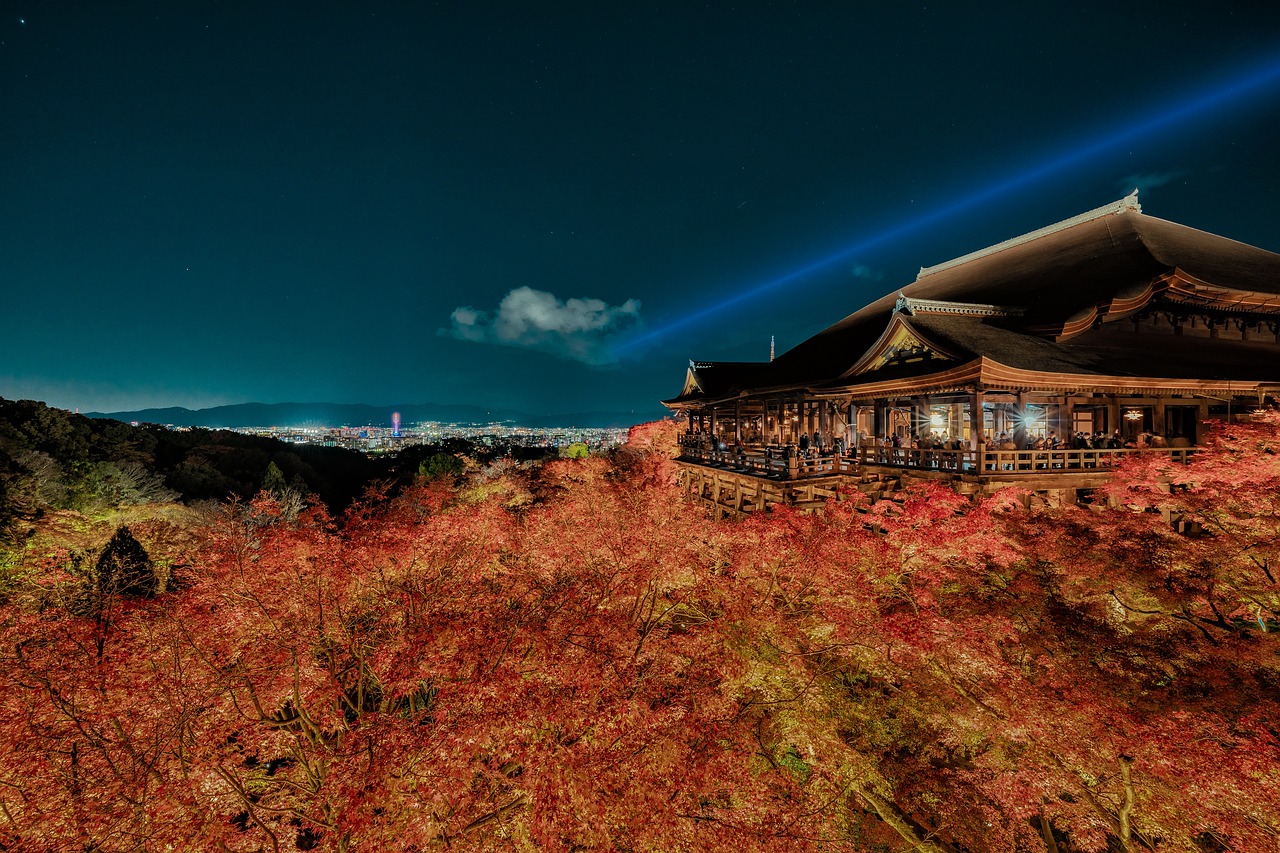Between business meetings, I found myself with an unexpected three-day window. It was the photo in an in-flight magazine—crimson maple leaves surrounding a wooden temple stage suspended in the air—that planted the idea of Kyoto in my mind. The image stirred something in me. I had to see it with my own eyes.
Located in central Japan, Kyoto is an ancient capital that stands in contrast to the modern metropolises of Tokyo or Osaka. People often describe it as a place where time moves a little slower. Within Kyoto, Kiyomizu Temple—situated in the eastern Higashiyama district—is said to be one of its most iconic landmarks. From Kyoto Station, it’s about a 20-minute bus ride. The approach winds uphill, and with every turn, the scenery changes. Both sides of the narrow street are packed with little shops, their scents of grilled soy and sweet matcha in the air nearly enough to stop me in my tracks.
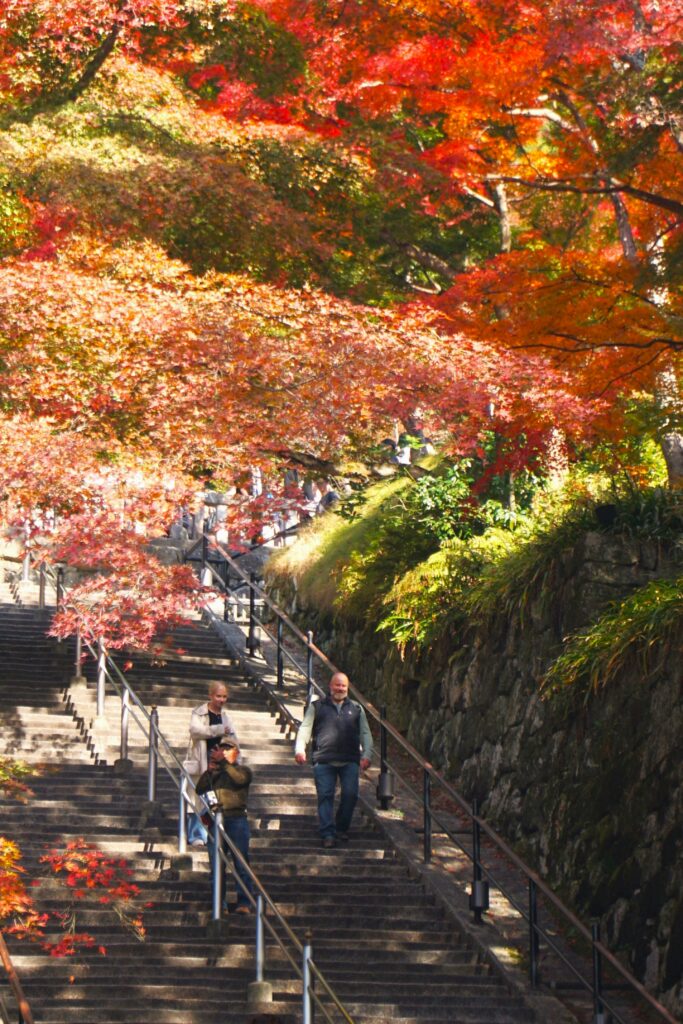
The autumn sun gently lit the stone paths, and the mix of camera shutters clicking and visitors laughing guided me to the entrance. And then, there it was—Kiyomizu Temple. Far more majestic than I had imagined, yet radiating a quiet warmth.
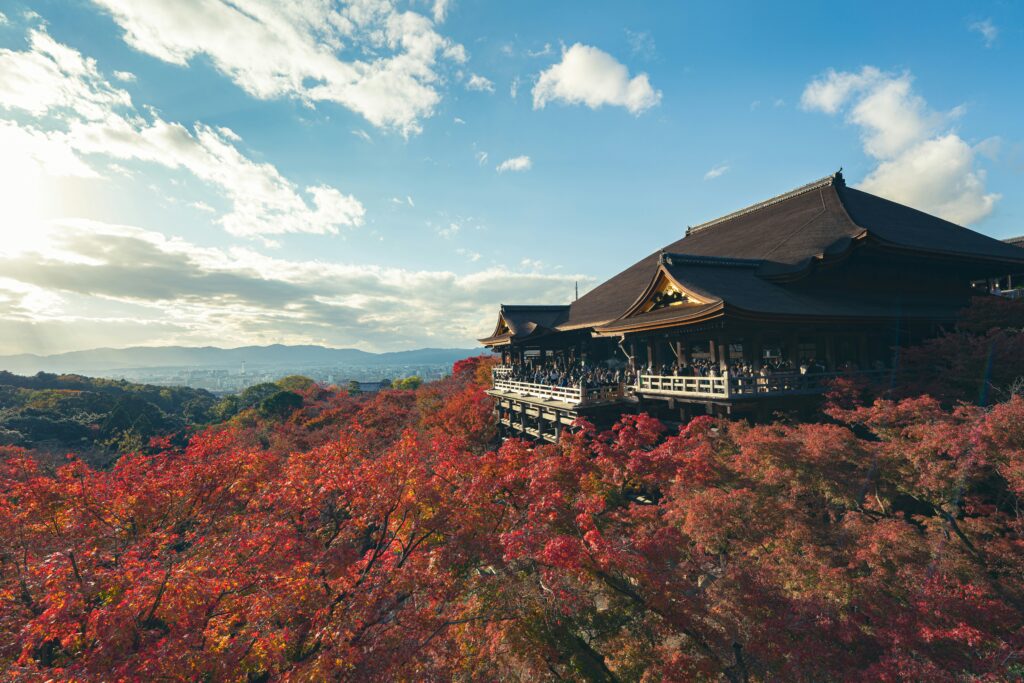
Legend says it was founded in the year 778 by a Buddhist monk named Enchin, who was drawn to this spot by the sacred sound of water flowing from Otowa Falls. He felt a spiritual energy here and built a simple hermitage. Over the centuries, the temple was destroyed by fires many times but was always lovingly rebuilt by people who believed in its spirit. Its most famous feature is the “stage of Kiyomizu,” rebuilt in the 17th century during the rule of Tokugawa Iemitsu. Crafted entirely without nails, this vast wooden platform still juts out confidently toward the sky.
Standing on that stage, I found myself looking out over a sea of autumn leaves—fiery reds, rich oranges, and patches of lingering green. Beyond them stretched the rooftops of Kyoto, framed by distant mountains. It was a view where nature, architecture, and centuries of human prayer merged into a single, breathtaking moment.
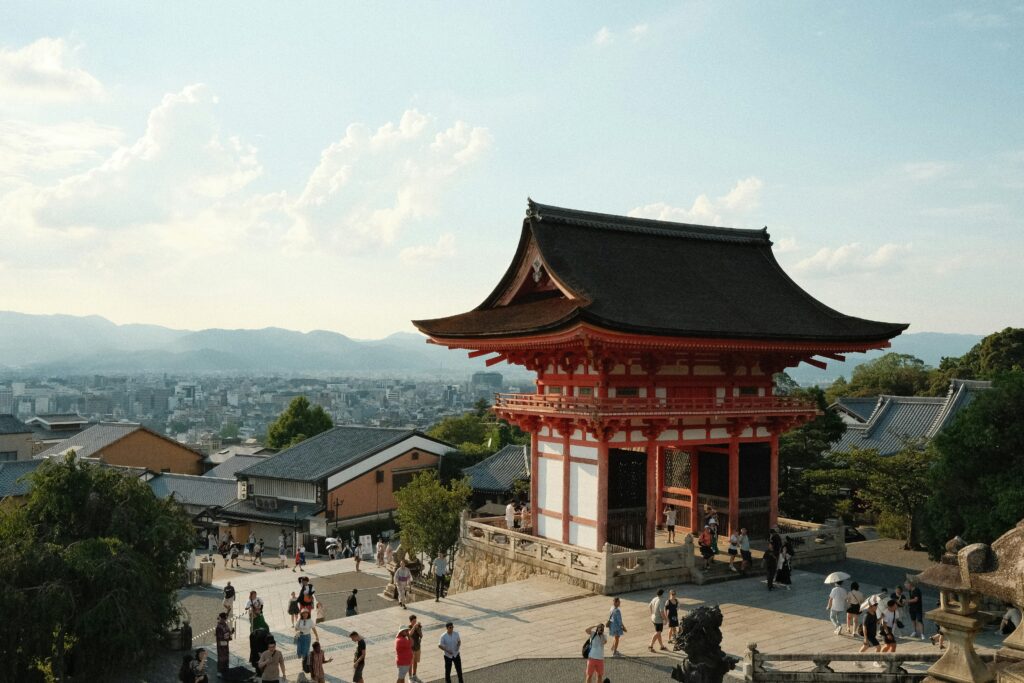
After paying my respects at the temple, I wandered down a narrow alley in search of lunch and found a tiny eatery tucked inside a traditional wooden townhouse. I stepped through a noren curtain and slipped off my shoes before being led to a seat by the window, where the scent of tatami and wood lingered in the air.
I ordered yudōfu—tofu simmered in a kelp-based broth—and takikomi gohan, seasoned rice cooked with mushrooms, carrots, and fried tofu. The tofu was soft enough to melt on the tongue, subtly flavored by the broth, with finely chopped scallions and ginger adding just the right accent. The rice offered the full taste of autumn in every bite. As I ate, I watched the leaves fall gently outside. It felt as if I had stepped into a painting.
Later, I stopped by a small sweets shop and ordered mitarashi dango and a bowl of matcha. The skewered rice dumplings, grilled over charcoal, were crisp on the outside and chewy inside. The sweet and savory glaze brought a nostalgic comfort, like tasting a childhood memory. The slightly bitter matcha tea wrapped it all together, slowly dissolving the fatigue of the day.
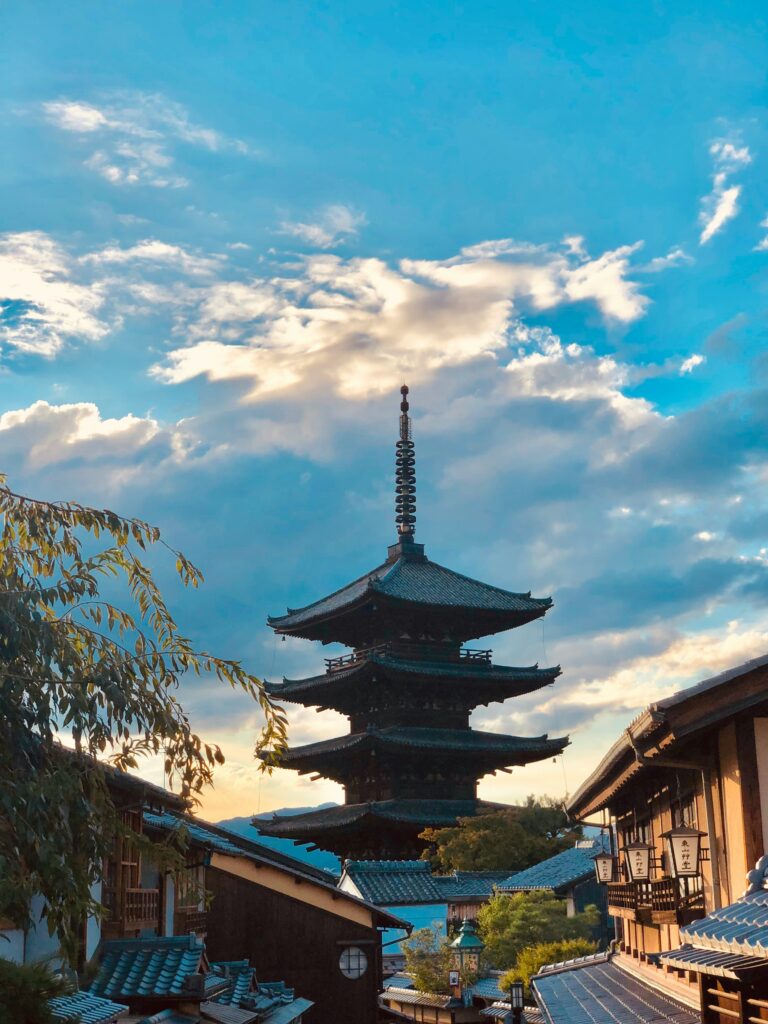
As I walked back, I paused on Sannenzaka, a sloped stone street near the temple. An elderly man sat in front of a small antique shop, wearing a calm expression. He smiled and asked, “Where are you from?” in slow, clear Japanese.
“Canada,” I replied.
He nodded and began to speak gently in English. His frame was slender, posture straight, dressed in a deep-blue samue—the kind of traditional workwear worn by monks or craftsmen. He seemed to embody the town itself.
He told me he had long practiced the tea ceremony and used to teach it to foreign visitors. “To prepare tea,” he said, “is to face your own heart. Traveling is much the same. In silence, you begin to hear your own voice.”
His words lingered with me.
Places like Kiyomizu Temple are stunning, of course. But what moved me most was something deeper—the way centuries of belief, rebuilding, and reverence kept these places alive. And it was in the quiet conversations and glances of the people who lived here that the real meaning of travel revealed itself.
The next day, I visited Ginkakuji and Fushimi Inari Taisha.
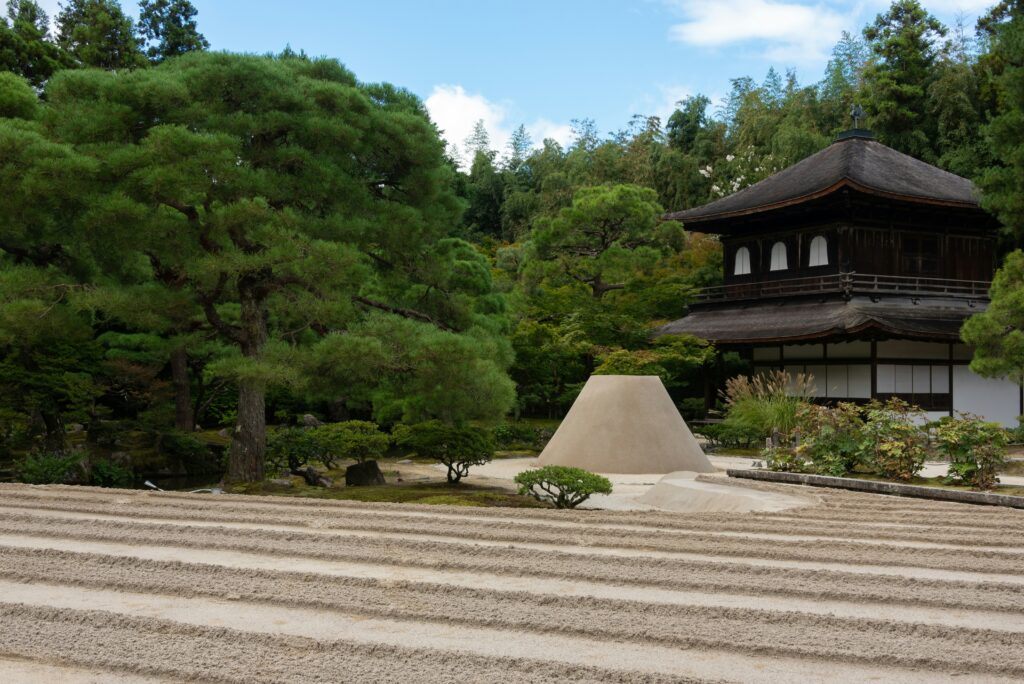
Ginkakuji, or the Silver Pavilion, is a Zen temple that exudes a gentle stillness, the quiet counterpart to its golden sibling, Kinkakuji. Though the planned silver leaf covering was never added, its unadorned wooden structure stands modestly at the center of the grounds. The temple’s famous sand garden—white gravel raked in delicate waves beside a conical mound called the “Moon Viewing Platform”—was a poem in stone. Each red leaf that drifted down onto the sand left a silence, like the end of a haiku. Voices faded away, replaced only by the wind and the sound of water. Time there seemed to pause, like a breath held just a little longer.
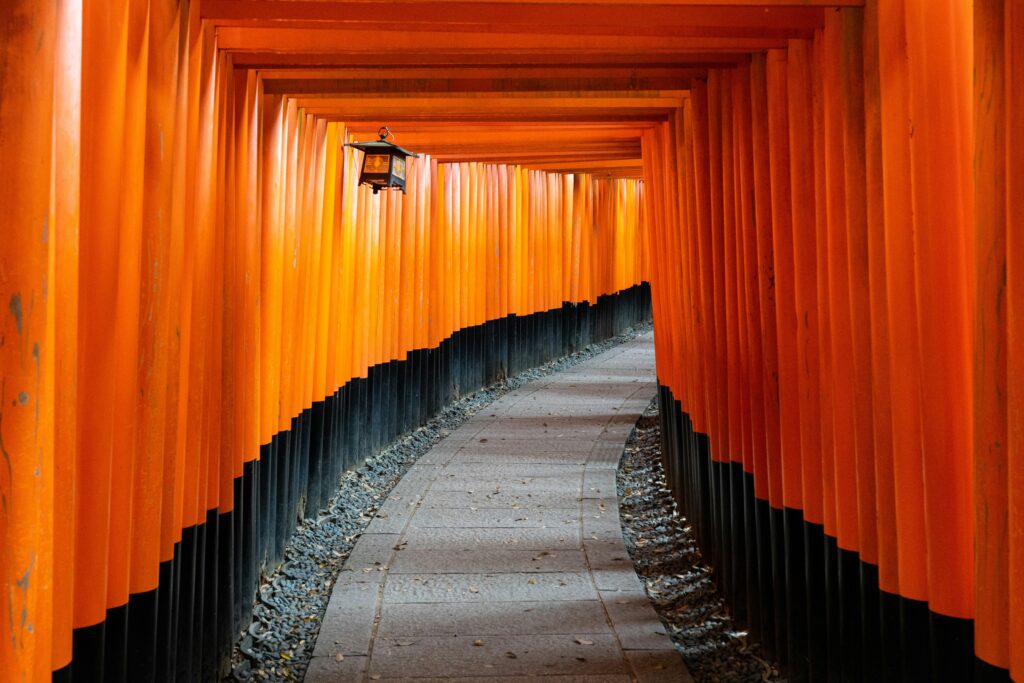
Finally, I arrived at Fushimi Inari Taisha, in the southern part of Kyoto. This Shinto shrine is famous for its thousands of vermilion torii gates that stretch across the entire mountain. Each gate was donated in gratitude or hope, and walking beneath them felt like moving through a corridor of human wishes.
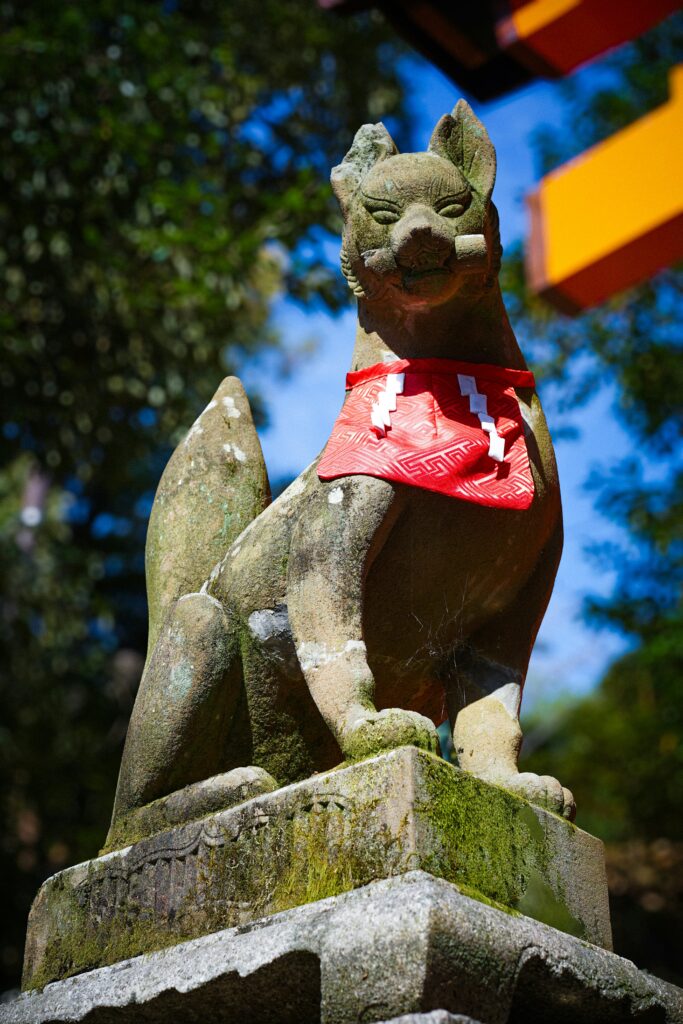
The afternoon sun angled through the torii, casting bands of red and shadow that made the path feel otherworldly. Stone fox statues peeked from the mossy edges of the trail. Visitors stopped in front of tiny shrines, hands clasped in prayer. Here, the act of wishing itself felt like a quiet, sacred ritual woven into time.
At the end of my journey, I returned once more to Kiyomizu Temple. The sun was setting, and the leaves had begun to glow gold.
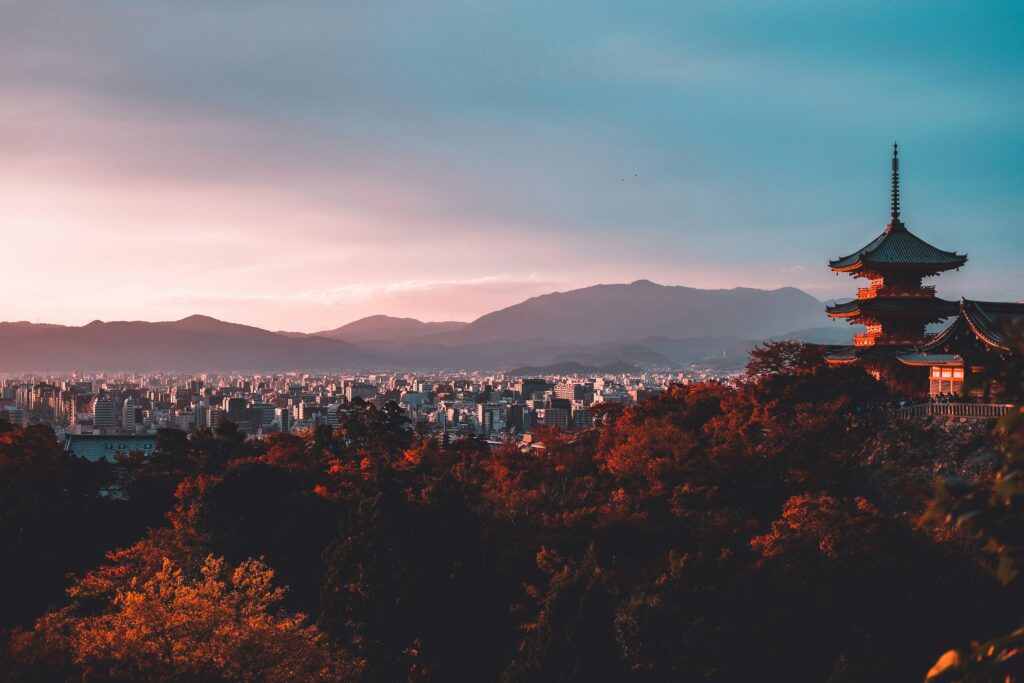
Closing my eyes, I noticed that the restless noise within me had softened, just a little. What I discovered on this trip was not a souvenir or a checklist item, but something quieter: the value of pausing, of simply noticing what is in front of me. When we do that—when we truly look and listen—we begin to see what we’ve truly been carrying in our hearts all along.
Something New Travel

